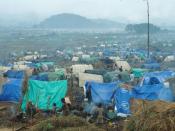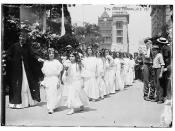Between April and June 1994, an estimated 800,000 Rwandans were killed in the space of 100 days. Most of the dead were Tutsis - and most of those who perpetrated the violence were Hutus. Even for a country with such a turbulent history as Rwanda, the scale and speed of the slaughter left its people reeling.
The genocide was sparked by the death of the Rwandan president Juvenal Habyarimana, a Hutu, when his plane was shot down above Kigali airport on 6 April 1994. Within hours of the attack, a campaign of violence spread from the capital throughout the country, and did not subside until three months later.
But the death of the president was by no means the only cause of Africa's largest genocide in modern times.
History of violence
Ethnic tension in Rwanda is nothing new. There have been always been disagreements between the majority Hutus and minority Tutsis, but the animosity between them has grown substantially since the colonial period.
The two ethnic groups are actually very similar - they speak the same language, inhabit the same areas and follow the same traditions. But when the Belgian colonists arrived in 1916, they saw the two groups as distinct entities, and even produced identity cards classifying people according to their ethnicity.
The Belgians considered the Tutsis as superior to the Hutus. Not surprisingly, the Tutsis welcomed this idea, and for the next 20 years they enjoyed better jobs and educational opportunities than their neighbours. Resentment among the Hutus gradually built up, culminating in a series of riots in 1959. More than 20,000 Tutsis were killed, and many more fled to the neighbouring countries of Burundi, Tanzania and Uganda.
When Belgium relinquished power and granted Rwanda independence in 1962, the Hutus took their place. Over subsequent decades, the...


